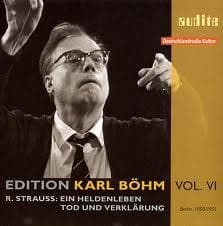Strauss' Music
RICHARD STRAUSS 1864 – 1949
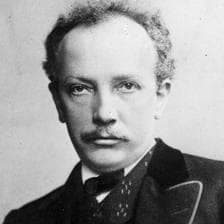
But towering over every one is Wolfie! Wolfgang Amadeus Mozart’s symphonies and concertos are staples of CH, while no OH could survive without his Nozze di Figaro, Don Giovanni, Così fan tutte, let alone his Magic Flute (Utah Opera last March) and Abduction from the Seraglio (Utah Opera in May 2014).
It surprised me to realize that the only other composer who equaled Wolfie’s fame in both venues was Richard Strauss, who, by the way, worshipped Mozart. So I thought I’d supply you a list of his major compositions with some comments. Followed by some suggested recordings. My favorites, of course!!!
TONE POEMS.
Aus Italien, Op. 16. 1886. In the Spring of 1886 the 22-year-old Strauss traveled to Italy and returned to Munich with sketches for a sort of Italian orchestral post-card/symphony in the requisite four-movements. If you think you recognize the main theme of the last movement, you do: it’s the popular “Funiculi, Funiculà”, which Strauss thought was a real Neapolitan folk-song. Critics jumped all over it, but we have no reason to be so snobbish. It’s a remarkable score for a youngster! And listen to the slow movement!
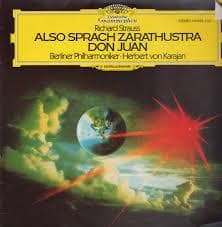
Macbeth, Op. 23. (This opus number is deceiving, for much of the piece was composed before Don Juan.) 1886/90. Very rarely performed, because it’s not especially successful at portraying the internal disintegration of Mr. and Mrs. M. But what 22-year-old, even one as talented as Strauss, could! The result is interesting, but not great.
Tod und Verklärung, Op. 24. 1888/89. The inspiration for this under-rated masterpiece is not clear. The poem published in the score is by Alexander Ritter, a violinist in the Meiningen Court Orchestra where Strauss was Assistant Conductor, though the prose scenario may well have been Strauss’s. Some commentators consider the score autobiographical; Strauss, in a letter, said it was not, but that has not stopped them from opining that musical autobiography must, of necessity, be bad. The Verklärung (Transfiguration) theme rises from the orchestral depths in the last page of Abendrot (the first-composed of his Vier Letzte Lieder) as the singer wonders if what she is experiencing is, indeed, death.
Till Eulenspiegels lustige Streiche, Op. 28. 1895. Initially Strauss considered Tyll as a possible opera; but, unable to picture his hero as a viable stage presence, he instead immortalized the 14-century character in this glorious orchestral riot! The original title is Till Eulenspiegels lustige Streiche nach alter Schelmenweise in Rondeauform für grosses Orchester gesetzt. Which translates as “Till Eulenspiegel’s happy pranks, according to funny old stories, in Rondo form, composed for a large orchestra.” Genius from start to finish!
Also sprach Zarathustra, Op. 30. 1896. This is based on a poem/novel of the same name by Friedrich Nietzsche (1844-1900), which was written between 1883 and 1885. Maybe Nietzsche had seeped into the compositional waters: it’s interesting to note that Mahler finished his Third Symphony that same year; the fourth movement (there are a total of six) is a setting of a Nietzsche text. Strauss was no philosopher, and any attempt to translate into purely orchestral music Nietzche’s abstract musings on the Universe, its creation and purpose might seem doomed to failure from the start. But Strauss manages it somehow! Stanley Kubrick used the initial “Sunrise” movement as the soundtrack for the opening sequence in his 1968 movie 2001: A Space Odyssey. Orchestras and recording companies flooded the market with performances!!
Don Quixote, Op. 35. 1898. It’s impossible to convert Cervantes’s extraordinary novel to another medium: it is too picaresque (a word which comes, interestingly enough, from Spanish) to be shaped into a dramatic arc. The operas (by such a diverse bunch as Telemann, Paisiello, Mendelssohn, Donizetti and Massenet); ballets (produced in Vienna, St. Petersburg, London, Berlin and Turin); films and musicals, cherry-pick the book for the most singable/danceable episodes. The problem with these adaptations is that we must, perforce, see the doddering, deluded old man, Alonso Quijano, aka Don Quixote. Cervantes’s genius is to make us forget Alonso and imagine the valiant Don embarking on his various exploits, despite Sancho’s various attempts to bring him back to reality. Strauss lets us aurally imagine the Don in the sound of a solo cello, while a solo viola represents his ever-faithful Sancho Panza. The result is an ingenious combination of a double concerto within a variation form. The various adventures are brilliantly illustrated, and then we get to the final section. Despite the hero’s (for hero he really is) disillusionment, has anyone died a more beautiful death in music?
Ein Heldenleben, Op. 40. 1899. Maybe death here is more beautiful, with the Held remembering the great works of his youth. For the hero in this piece is blatantly the composer. This was bound to upset the critics, not only because they were uncomfortable with musical autobiography, but also because they were so vividly portrayed as petty-minded nonentities. Not to worry: the Hero deflates them and leads a triumphant life!
Symphonia Domestica, Op. 53. 1904. If critics were upset with the idea of the composer as the protagonist of Heldenleben, they were shocked to realize the latest tone-poem was a musical day chez Strauss: Richard, his Missus and baby Bubi! Its first performance was in Carnegie Hall. Strauss considered the work, the performance and the audience reaction “splendid”. (He ignored one newspaper’s headline: “Home Sweet Home as written by Richard Strauss…Huge Conglomeration of Orchestral Music.”) It isn’t as awful as it might seem, but it’s no masterpiece.
Eine Alpensinfonie, Op.64. 1915. This last tone poem (the first in 3-D!) is a National-Geographic-Special illustration of a day spent mountain climbing, beginning just before dawn and ending, twenty-one sections later, that night. The orchestral requirements are truly Alpine! Not content with quadruple woodwinds (which should be doubled for certain sections); eight horns; a minimum of thirty-four violins; two, but preferably four, harps; a percussion section that includes a wind-machine, a thunder-machine and cowbells, Strauss asks for a dozen off-stage horns! Needless to say, the piece is rarely performed: assuming the orchestra’s management can afford the required extra players, there are not many concert platforms that can accommodate them. Abravanel Hall did, barely, for their final concert of the 2011-12 season. Strauss himself conducted the first performance, in Berlin; but the orchestra was that of the Dresden Opera House, which had played Salome, Elektra and Rosenkavalier. Footnote (which isn’t!): the Cincinnati Orchestra announced the American première would take place on May 4, 1916; Leopold Stokowski (he of Mickey Mouse/Fantasia fame) announced that his Philadelphia Orchestra would perform the work on April 28; Cinci crammed and played it, before 2,000 people, on April 27.
WORKS WITH ORCHESTRA.
There are two symphonies, both early works (1880 and 1883) and rarely played.
Le bourgeois gentilhomme Suite, Op. 60. 1917. Max Rheinhardt had the idea of staging Molière’s play of the same name, followed by the opera demanded by Jourdain, the titular gentilhomme. It was a disaster: the playgoers didn’t want the opera, and the operagoers didn’t want the play! From the rubble, Strauss rescued the play’s incidental music, three numbers of which are based on Lully’s music for the original comédie-ballet first produced before Louis XIV in 1670. See Ariadne auf Naxos below.
Metamorphosen for 23 solo strings. 1946. During the Second World War, Munich was bombed over 70 times, the worst apparently in January 1945. The Opera House, like so many other German theatres, was destroyed. Munich was both familial and musical home to Strauss: he was born there, was musically nurtured in the city, and worked at the Opera House. This work is a threnody not just for his native city, but for all of Germany with its unparalleled musical history.
Horn Concertos. Two of them: the first in 1882/1883; the second in 1942. Daddy Strauss was Principal Horn at the Munich Opera and, later, in Bayreuth (though he didn’t understand Wagner’s music). Not surprising, then, that that instrument plays such a prominent role in most of Strauss’s compositions!
Burleske for piano and orchestra. 1886-1890. Horrendously difficult for the pianist!
Parergon zur Symphonie Domestica for piano left hand, Op. 73. 1925. Panothenänzug for piano left hand, Op. 74. 1926-27. Paul Wittgenstein (brother of Ludwig, the philosopher) had lost his right arm in WWI, and commissioned various composers, including Britten, Prokofiev, Hindemith and Korngold, and, most famously, Ravel, to write concertos for his left hand and orchestra. These are Strauss’s contributions.
Concerto for Oboe in D major. 1945. When American soldiers approached Strauss’s house in Garmisch, he introduced himself as “the composer of Der Rosenkavalier.” John de Lancie knew of what he spoke and wondered if he had ever considered writing a concerto for oboe (his instrument). It was duly written but, while Strauss assigned the American première to de Lancie he, a junior player with the Philadelphia Orchestra, gave the American première to the CBS Symphony, whose principal oboist at the time was Mitch Miller – yes, THAT Mitch Miller!
Duet-Concertino. For clarinet, bassoon and string orchestra. 1948. Some people think that Strauss froze as a composer after Der Rosenkavalier and then miraculously thawed out to give us his four final songs. Not so. The 2nd Horn Concerto is one gorgeous proof; the Oboe Concerto is another; and here’s a third, which, for who-knows-what-reason, is rarely performed.
OPERAS.
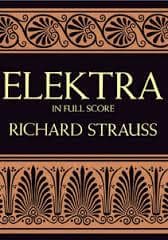
Guntram. Strauss wrote his own libretto. The opera was first performed in 1894 in Weimar, where Strauss was an Assistant Conductor. He revised the score in 1940, but the piece was then, and is now, rarely performed.
Feuersnot. Another non-starter. The libretto was by Ernst von Wolzogen (who sounds as if he were one of Wagner’s Mastersingers! The first performance, in Dresden in 1901, marked the start of a very rewarding collaboration between the composer and the city’s Opera/Orchestra. Is the opera ever performed today?? Seldom, if ever.
Salome. Strauss made his own adaptation of Hedwig Lachmann’s German translation of Oscar Wilde’s play, which was originally written in French. The first performance in Dresden, in 1905, rocked the musical world. This gets a chapter to itself below!
Elektra. Following the huge success of Salome, Hugo von Hofmannsthal, a well-respected Austrian(?) poet and playwright, offered his services as a librettist to Strauss. Their first “collaboration” was an adaptation of his play Elektra. Again the first performance was in Dresden, in 1909. An even wilder success: Strauss was hailed as the avant-gardest of all avant-garde composers! Hofmannsthal’s play is a brutal retelling of the Greek myth: Elektra needs to avenge her father’s murder; her sister, Chrysothemis, needs to marry and have children to be fully a woman; her mother, Clytemnestra, needs to assuage the guilt she feels for being an accomplice in the murder of her husband, Agamemmnon. Hofmannsthal’s version is very aware of Sigmund Freud’s contemporary experiments in psychology. To express the brutality of the play, Strauss resorts to the most violent music he can imagine. He requires a huge orchestra. He piles chords in one key on top of chords in another key. (On your piano, play a C major chord with your left hand, and at the same time play a Db major chord with your right hand!) It’s called “bi-tonality” = 2 keys at the same time, and it sounds pretty brutal! It is, but the opera is an incredible emotional experience, which is not often performed because there are very few sopranos who can cope with the vocal and emotional demands of the title role. So every performance is one to be treasured.
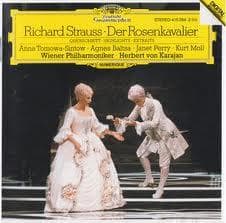
Ariadne auf Naxos. Max Reinhardt, a great theatre director (we know him, if we do at all, as the director of the Hollywood movie version of Shakespeare’s A Midsummer’s Night Dream that starred James Cagney as Puck!!!), had been called in to work secretly with the singers of the first production of Rosenkavalier. He suggested to Hofmannsthal an adaptation of Molière’s play Le Bourgeois Gentilhomme, which would be followed by the opera originally ordered by the BG! Strauss would write incidental music for the play, and he and Hofmannsthal would compose the opera. The première, in 1912, at Reihnardt’s theatre in Stuttgart, was pretty much a disaster. The evening lasted about 6 hours; the play-folk resented having to sit through an opera (though they could have left, right?), while the opera folk resented having to sit through a play. Four years later, and half-way through WW1, Strauss and Hofmannsthal decided to revisit that disaster. And it is this 1916 version that is most often performed today. Strauss had already adapted the play’s incidental music into an orchestral suite, but much of the opera’s music needed to be salvaged. Hofmannsthal devised a Prologue which set up the situation of a wealthy man needing to combine his Opera Seria company with the Commedia dell’Arte troupe he’d also hired: “high” drama (Ariadne/Bacchus) mixed with “low” comedy (Zerbinetta and her buddies). Not sure the combination works, despite the glorious music.
Die Frau ohne Schatten. Hofmannsthal, as befitted a “von”, felt that the “von”-less Strauss needed to turn his compositional talents to a higher purpose. The extraordinary triumph of Der Rosenkavalier (admittedly more musical than dramatic) did not satisfy the poet, so he proposed a “Magic-Flute-meets-Sigmund-Freud” libretto: the ultra-sophisticated poet trying to “educate” his beer-brewing composer-collaborator. Strauss’s mind could not wrap itself around HvH’s psycho-philosophic notions: a parable of a non-earthly Empress who has no shadow needing to steal one from an earthly woman so that she (the Empress) can bear children in order to prevent her husband from being turned into stone. Really?? Don’t ask! The result is a wonderful mess: glorious music (when Strauss “got” the emotional context), surrounded by dutiful note-spinning (when he was flummoxed by the high-falutin verbiage). The opera was not a success at its first performance in Vienna in 1919 – audiences were probably as flummoxed as Strauss was! Since then conductors have been challenged by the complexity of the orchestral writing; orchestral players by the instrumental writing; singers by the vocal demands; stage-directors by its theatrical demands. So only places like the Met, Covent Garden and Vienna dare to produce the piece.
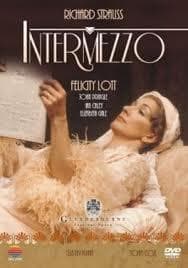
Die Ägyptische Helena. We’re all familiar with the story of Helen, the Queen of Sparta, who was abducted to Troy by Paris, resulting in the Trojan War. Jacques Offenbach’s La belle Hélène uses the abduction myth to satirize contemporary French society, and I bring that up only because Utah Opera performed the piece in 1993. But are we familiar with what happened to Helen after the destruction of Troy and the death of Paris? For that we need to check Homer’s Odyssey (the sequel to his Iliad). Telemachus, Odysseus’s son, sets out to find his father, who has gone missing on his return from the Trojan War; in his search he is welcomed at the court of the reconciled Helen and Menelaus. Trust HvH to know his Stesichorus – remember him? – who had come up with the fantastical notion that the “real” Helen was “abducted” by the gods to Egypt to await the return of her husband, while a sort of cartoon version of the original was taken to Troy. Natch, HvH would seize on the “happy marriage” version (see Frau ohne Schatten above!). Problem, as so often with him, was that what began as a light-hearted approach gradually gained more and more symbolic and philosophic weight, until it virtually died of its own obesity! Menelaus becomes so confused with the various personalities his wife assumes under the influence of Aithra, not to mention a Tristan-like potion (when Strauss, a great Wagner conductor pointed out the connection, HvH was greatly umbraged) that the ending could be thought of as his complete capitulation to a contemporary “Whatever – just get me out of here!” The audience might well feel the same, especially when it’s presented, in the first act, with “The all-knowing-Mussel”, or, as HvH describes it, “the Sea-shell.” A singing sea-shell? Seriously?? The June 6th, 1928 premiere in Dresden was not a success (surprise!) nor was the Vienna premiere a mere five days later. Various revisions were made for a performance at the Salzburg Festival in 1933, but they couldn’t save the score.
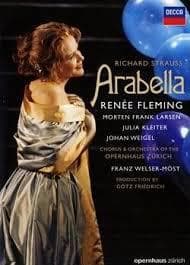
Die schweigsame Frau was based on a translation, by Johann Tieck, of Ben Johnson’s Elizabethan play Epicoene or The Silent Woman. Stefan Zweig was the librettist. Strauss was delighted with the adaptation, and work proceeded with amazing speed – there was none of Hofmannstahl’s obscure symbolism to work through! The draft libretto was finished and composition had begun when the Nazis gained political control. Almost immediately edicts were issued against the Jews, including one that forbade theatres to produce anything to which a Jew had made the slightest contribution. Goebbels broadcast the shocking news that Strauss was working on an opera with a libretto by a Jewish author. Zweig was a Viennese Jew and recognized that his work with Strauss was, essentially, over. In 1934 he left Austria. Strauss couldn’t see that there was a problem, or at least one that his fame and standing couldn’t solve. He managed to secure an assurance that the opera would be performed; shortly before the première in June 1935, again in Dresden, he noticed that Zweig’s name was omitted from the theatre billing, and refused to attend the opening if the librettist was not credited by name. He was. The first performance was enthusiastically received, but after the second performance further performances in Dresden were banned and future productions in Germany were forbidden. The opera house in Graz, Austria (the birthplace of Karl Böhm, who conducted the original 2 performances) produced it in 1936; Zürich saw it in 1942. As if to make amends, Dresden gave the first post-WWII performances in Germany; but it didn’t reach Vienna until 1968, ten years after New York City Opera gave the American première; and it didn’t hit Strauss-Central-USA (i.e. Santa Fé Opera) until 1987. Zweig tried to make Strauss realize that, with the Nazi’s 1933 “Non-Aryan” edicts, their collaboration would not be allowed to continue, and suggested various writers who would be only too happy to provide librettos; he even hinted at a sort of “ghost-writing” : he would actually write the libretto, but someone acceptable to the Nazis would be credited. When Zweig left Austria in 1934 he moved first to England then, in 1940, to America, and finally to Brazil. Long-distance relationships rarely work, even in peace-time; a composer/librettist relationship would have been impossible between countries at war with each other. Strauss settled on Josef Gregor, a literary hack, who offered a libretto based on a Zweig draft which dealt with an historical event in 1648. Friedenstag is in one act, but Strauss, with the full score completed in 1936, seemed in no hurry to arrange a production. There was to be a companion piece to fill out the evening, and in October 1935 Strauss received drafts of two librettos based on the myth of Daphne. Gregor considered the two pieces connected: Friedenstag was a parable of peace in humankind, while Daphne would represent peace in nature; both operas were to end with a chorus pointing up the moral of each one. Strauss was distinctly underwhelmed with both Daphnes and wrote to Zweig “Words upon words, schoolmaster banalities…no interesting spiritual conflict.” Gregor slogged away until, with Friedenstag completed, Strauss “majestically” (Norman del Mar’s wonderful adverb) conceded that composition could begin, though he still hated the choral ending. It was the conductor Clemens Krauss who finally solved the problem of the ending, and the score was finally completed in December 1937. Strauss arranged for Krauss to conduct the premiere of Friedenstag in Munich in July 1938. The two one-acts were first paired in Dresden the following October, with Karl Böhm conducting. With Germany gearing up for war, it is surprising that the Nazis allowed the production of an opera called Day of Peace. It wasn’t successful in 1938 and it has seldom been revived.
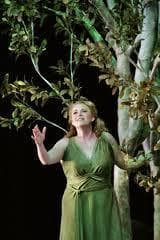
With the two one-act operas launched, Strauss was in no mood to continue the collaboration with Gregor. In 1936 he decided that a sketch von Hofmannsthal sent him way back in 1920, based on yet another myth, was the perfect scenario for his next opera, completely forgetting that it had been one of the subjects offered by Gregor at their first meeting. The problem with HvH’s sketch was that it combined two myths connected only by gold: Danae, imprisoned by her father in a tower, is freed by Zeus, disguised this time as a shower of gold; and the much more familiar story of King Midas who turns to gold everything he touches. The sketch grew more and more complicated. Gregor was flummoxed, and Strauss was frustrated, for not even his usual helpmeets could help solve the various dramaturgical problems. War was declared around the time the first act was fully scored. Convinced that this would be his last opera, Strauss insisted that the final duet between Danae and Jupiter be an affirmation of Danae’s love for her husband, the now-impoverished Midas, with Jupiter resigning himself to her loss. True love triumphs, and it was around this time that HvH’s original title was abandoned in favor of Der Liebe der Danae (“Danae’s Love). Again Strauss channels his youth and combines it now with a sense of resignation at his approaching end. The score was completed in June 1940. Given the war-time conditions, there seemed little chance of a satisfactory launching of the new opera, and Strauss was reluctant to have it produced under any but the most ideal conditions. (He felt that the relative failure of Die Frau ohne Schatten was because it was produced too soon after the end of WWI, while Austria and Germany were still trying to recover from that horror.) And so he told Gregor that the opera should not be produced until at least two years after peace had been declared; to the conductor Clemens Krauss he reiterated his request. Who ignored it. He planned to present the opera at the Salzburg Festival in 1944 to celebrate the composer’s 80th birthday. Somehow the opera was prepared for production and Strauss went to Salzburg for the final rehearsals; after one of the last orchestra-only sessions he said to the players: “Perhaps we will see each other again in a better world.” There was a dress rehearsal, and that was probably the last opera performance in Germany until after the war: all theatres had been ordered to close.. The “official” first performance was at the Salzburg Festival in 1952.
Despite his conviction that Danae would be his last opera, and even before it was completed, Strauss was sniffing around for a new libretto. Gregor’s various suggestions were dismissed and he could not fathom why Strauss would suggest an adaptation of Prima la Musica e poi le parole (“First the Music, and then the words”) a libretto by the eighteenth-century Abbé Giovanni Battista Casti. (Antonio Salieri set the original text, and the one-act opera was produced in 1786, with Mozart’s Der Schauspieldirektor.) What Gregor could not know was that Zweig had suggested that the Casti piece, or at least its title, had possibilities for an opera about opera. In 1934 Zweig had drafted a rough sketch and invited Gregor to spend some time with him in Switzerland in June 1935 to discuss it. Gregor’s initial scenario of that year was ignored by Strauss, but, ever-humble, he sent a new draft in 1939. Strauss himself could never remember Casti’s title, but he told Gregor that he needed “an ingenious dramatic paraphrase on the subject of “First the words, then the music (Wagner), or First the music, then the words (Verdi), or Only words, no music (Goethe), or Only music, no words (Mozart).” It soon became clear that Gregor could not supply the text that Strauss was looking for. Enter, yet again, Clemens Krauss. Gregor was kindly relieved of his duties and composer and conductor set about the task of translating Zweig’s adaption of Casti and Gregor’s adaptation of that adaptation into a workable libretto. Work proceeded quickly and the delight Strauss found in Krauss’s text opened up fully the well of inspiration that had only trickled out in Danae and Daphne.
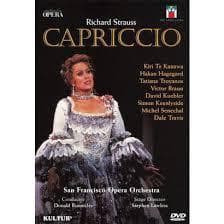
But a more glorious farewell to Pauline lay in store.
SONGS.
If we are to believe Strauss, he composed his first song in 1870. He was six. He composed his last song in 1948. He was 84. Songs were a constant in his life. Many of them were written for voice and piano – the usual combination; some were conceived with orchestral accompaniment; while others were orchestrated either because he wanted to include his wife Pauline in his conducting engagements, or because he needed to keep busy. Of the two-hundred-plus songs there are maybe two dozen that can be considered great. But these are very great songs. Listen to Morgen, whose two pages open up for us a world beyond this earth. And Ständchen. And Allerseelen. And… so on, until we come to his Final Four! These Vier letzte Lieder (the title was not Strauss’s) are the crowning glories of his compositional life. They are among the greatest songs in the entire repertoire, and how a soprano can sing just one of them without being overcome by the sheer beauty and deeply-felt emotion of the music is beyond me! The orchestra is a huge one, requiring a large voice which can surf on the waves of sound; the soprano who sang them for the first time (London, 1950) was the greatest Isolde of her day, Kirsten Flagstad. Norman del Mar, in his monumental Richard Strauss, sums them up thus: “At the end only the memory of his Pauline’s voice could be his companion on these farewell excursions through the music to which his whole existence had been dedicated.”
RECORDINGS
I promised you some suggested recordings at the start of this chapter, and now, at the end of it, I deliver! But it will be relatively brief.
First of all you should be aware that Strauss himself recorded some of his orchestral works in the 1930s and 1940s.
I have two favorite conductors of Strauss: Rudolf Kempe and Karl Böhm. Both of them had a great affinity with this music and there is always a feeling of “rightness” in their approach to the works.
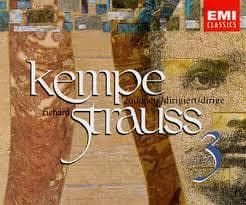
For some reason Karl Böhm’s recordings of Strauss’s tone poems never grabbed me the way Kempe’s did, though Böhm did record them all with the Dresden orchestra. It’s in the recordings of the operas that he strikes me as ideal. All of them are live performances, except for the filmed versions of Salome and Elektra, whose soundtracks were recorded in the studio before filming began. And his glorious recording of Capriccio derives from a Bavarian Radio broadcast.
